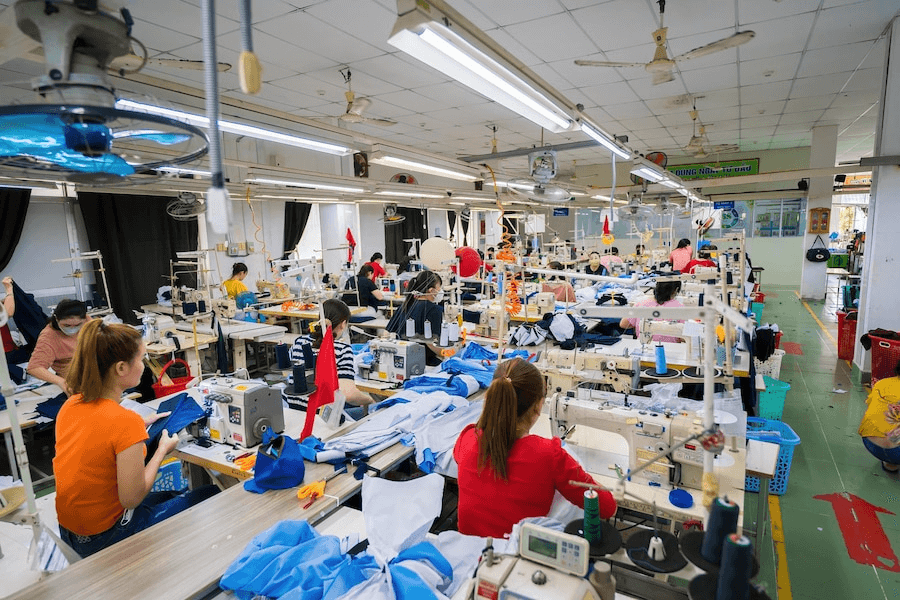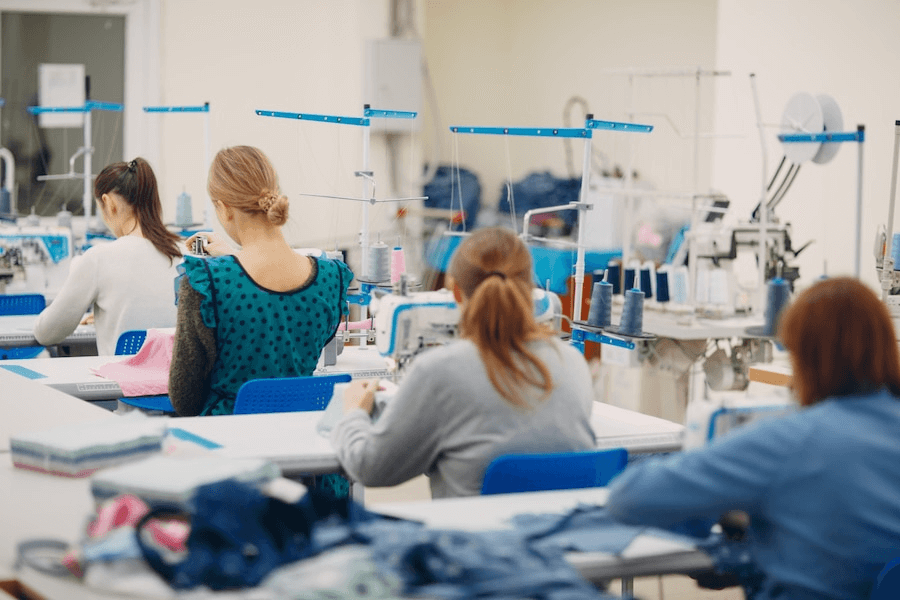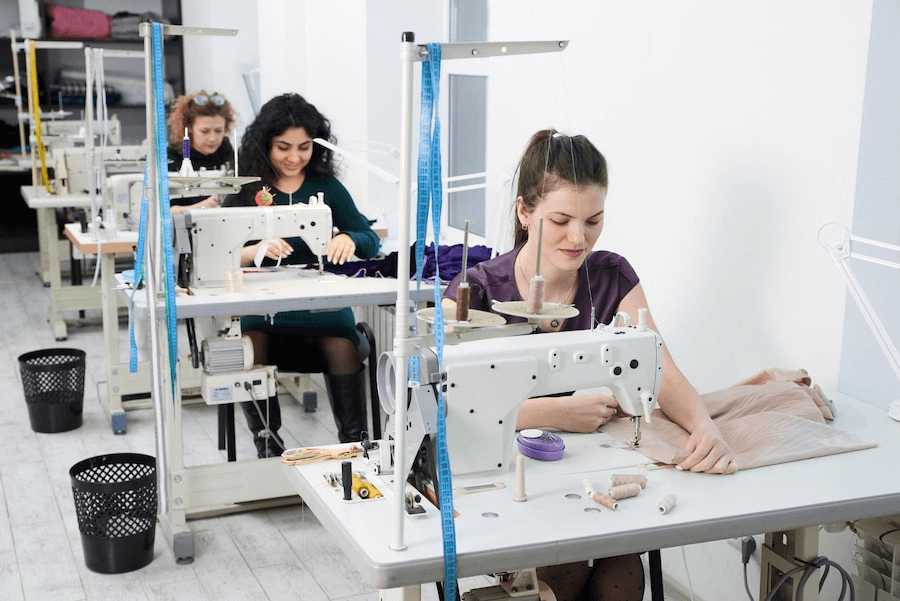What Is Crepe Fabric? Properties, How It’s Made & Where It Comes From
Crepe fabric is one of the most loved textiles in modern fashion....
Although you’ve undoubtedly seen the term “fair trade” in stores or on clothing labels, are you aware of what it means? Fairtrade clothing has strict social and environmental guidelines to ensure safe, moral workplaces and fair wages for workers.
The principles of fair trade aim to empower producers and promote sustainability. If you want to make a positive impact with your wardrobe and support ethical practices, buying fair-trade clothing is a great place to start.
What is fair-trade clothing? Fair-trade clothing means the farmers and workers who produce the materials and make the garments earn a living wage and work in safe conditions.
In short, the term “fair trade” refers to a global movement that helps fair trade clothing manufacturers and producers in developing nations benefit from improved trade agreements. Better working conditions and equitable pricing for all are among the objectives of this movement. Furthermore, the communities where apparel and textiles are made benefit from ethical trade.
It’s a common belief in some manufacturing nations that workers in clothing have suitable working conditions. Choosing fair-trade clothing is a moral decision that upholds human rights and breaks the cycle of poverty. When you buy fair trade fashion clothing, you’re using your dollar to make a difference.
Related Article: Guide to Fashion Incubators

Fairtrade clothing must adhere to ten important principles to be considered fair trade.
Fair Trade Certification ensures that producers, often in developing countries, have better working conditions and pay. Membership in a fair-trade cooperative gives farmers and workers a stronger voice and more control over their livelihoods.
Cooperatives provide resources for community development and education. They set a fair price for goods that provides a living wage for producers. This stable income allows disadvantaged producers to support their families and reinvest in their farms or businesses.
Fair Trade also encourages sustainable farming practices that are eco-friendly and help combat climate change. These practices promote crop diversity, natural resource conservation, and the transition to organic certification. Fairtrade cooperatives give producers opportunities to improve their lives in meaningful, long-lasting ways.
Fair trade organizations are transparent in their dealings and hold themselves accountable to stakeholders. They publically share information about the flow of goods, money, and partnerships between companies, producers, and customers. Records of these transactions and relationships are available for review. Fairtrade organizations also commit to continuous improvement and welcome outside evaluation and critique.
Everyone in the supply chain is open to feedback on how to strengthen the system and better uphold fair trade principles. Transparency builds trust that the people behind the products are being treated fairly and paid fairly.
Fair-trade clothing means following strict environmental standards. This includes:
Sustainable Materials
Fair Trade-certified brands use sustainable, eco-friendly materials like organic cotton, hemp, recycled polyester, and natural dyes. These have a lower impact on the planet compared to conventional clothing production.
Fairtrade clothing is made to last longer too, so people don’t have to replace items as frequently. This reduces waste and minimizes the environmental footprint of production.
Fairtrade organizations follow ethical practices to support producers and consumers. Fair compensation for both farmers and laborers, safe working conditions, and sustainable farming are their main goals. Buying products that are certified fair trade is one way for you, as a consumer, to support fair trade.
This means workers receive fair compensation for their work to produce fair-trade products. Farmers and workers should receive fair-priced clothing that covers the cost of production and allows for economic and social development.
The minimum price paid to producers is determined through dialog between producers and buyers and should aim to be higher than the market price. Additional funds are also provided for community development projects like building schools, medical clinics, and improving infrastructure.
Fairtrade promotes equal opportunity and focuses on empowering marginalized producers, especially women. Fairtrade standards encourage the participation and empowerment of women, who make up a large percentage of workers in many agricultural supply chains. Women should have equal opportunities for income and professional development.
Ensuring no child labor or forced labor is an essential principle of fair trade textiles. Fairtrade brands and suppliers strictly prohibit using child labor—employing anyone under the minimum age of 15. They also ban forced labor of any kind, including prison labor, indentured labor, or labor obtained through human trafficking.
Ensuring good working conditions means providing fair wages and safe conditions for workers. As a consumer, you can support branding your clothing line that pays living wages, limits work hours, and allows collective bargaining.
Look for certifications like Fair Trade Certified that set standards for working conditions. They require living wages, safe workplaces, reasonable work hours, job security, and the right to organize. Fairtrade principles aim to empower producers and promote community development.
Fair-trade clothing brands are socially accountable to both workers and consumers. They adhere to strict standards set by the Fair Trade Federation and the World Fair Trade Organization.
Transparency
Fairtrade brands openly share details about their supply chain and manufacturing. They disclose the locations of factories, the names of suppliers, and details about working conditions. This allows customers to make informed purchases and hold brands accountable.
In the hiring, compensation, training, promotion, termination, or retirement processes, there shall be no discrimination on the grounds of race, caste, national origin, religion, handicap, gender, sexual orientation, union membership, political affiliation, HIV/AIDS status, or age. Gender equality is pushed to ensure that women have equal opportunities, full employment rights, full statutory employment benefits, and equal pay for equal work. Workers’ freedom to form and join the trade unions of their choice is protected.
Fairtrade manufacturing organizations work directly with producers to build their abilities and skills. This allows the producers to improve their businesses, strengthen their organizations, and gain more control over their futures.
Capacity-building activities may include:
When you buy fair-trade clothing, you support ethical practices and help improve lives. Every purchase makes a difference. By investing in producers and their communities over the long term, fair trade aims to create sustainable livelihoods and enable greater economic independence. Capacity building is key to achieving Fair Trade’s goal of empowering marginalized producers.
Related Article: Guide for Production Management in Fashion Business

Even though free market capitalism has given the majority of people on the planet the best quality of life improvements in human history, if it isn’t properly regulated, this amazing engine of innovation could be harmful. Cheap cotton products are great for Americans and Canadians, but if cotton farmers in China or India don’t get fair clothing compensation that supports sustainable livelihoods, this benefit is diminished.
Global textile manufacturers should ideally embrace fair trade fashion factory practices, which include natural fibers and low-impact dyes, without any outside assistance. However, the profit-at-all business model is inherently incompatible with moral supervision.
Fair Trade
The terms “fair trade” and “fairly traded” can refer to several different ideas. To ensure that a product is genuinely certified as fair trade, check its packaging for the fair trade mark.
FairTrade
Only businesses, brands, and goods included in the Fairtrade International system may use the term “fairtrade.” We are a global network of over two million farmers and laborers operating in nearly 80 countries throughout the Global South. If a product’s packaging has the blue and green Fairtrade Mark, you can identify the difference. The presence of our logo on a product indicates that it has undergone an independent audit by FLOCERT and satisfies our stringent social, economic, and environmental standards.
The terminology used in fair trade can be perplexing and frequently misapplied. “Fairtrade”—a single word—is a certification scheme. These certifications are given to products by organizations that evaluate the trading conditions of their supply chains based on specific criteria. Among these requirements are:
The goal of fair trade as a concept and as a certification is to increase the fairness of international trade. Both hold the same view that better farming and production conditions boost regional economies, ensure food security, and aid in correcting wealth disparities around the world.
When shopping for fair-trade clothing, look for brands dedicated to ethical and sustainable practices. Some recommended places to start:
The key is doing your research, asking questions about production methods and labor policies, and choosing brands aligned with the fair trade principles of fair wages, safe working conditions, and eco-friendly practices. Every dollar you spend is a vote for the kind of fashion system you want to see. Make it a vote for good.

Fairtrade Clothes aims to promote sustainable and ethical practices within the fashion industry. Compared to fast fashion, which produces clothing quickly and cheaply to follow the latest trends, fair trade in fashion ensures safe working conditions, fair wages, and eco-friendly production.
While fast fashion often exploits workers and the environment to maximize profits, fair trade aims to empower producers and promote sustainability. By choosing fair-trade clothing over fast fashion, you can use your purchasing power to support ethical labor practices and help lift communities out of poverty.
How do I find clothing manufacturers? The manufacturers of the world’s clothing bear a great deal of the burden of fast fashion. You can help workers earn a living wage, defend their rights, feel safe, and get enough sleep by purchasing clothing made under fairtrade conditions. After all, who wouldn’t want those things for themselves or other people?
Related Article: Clothing Business Ideas
An overview of the fundamentals of fair-trade clothing and the rules that regulate how fair trade works You can truly impact lives and make a difference with your purchasing power by opting to support Fair Trade Certified brands and retailers. You’ll feel good about your purchase of jeans or a new t-shirt because they were made ethically and sustainably, and you’ll be helping workers and farmers everywhere to get better pay and safer working conditions. Although fair-trade apparel may be slightly more expensive, it is an investment in environmental responsibility and human dignity.